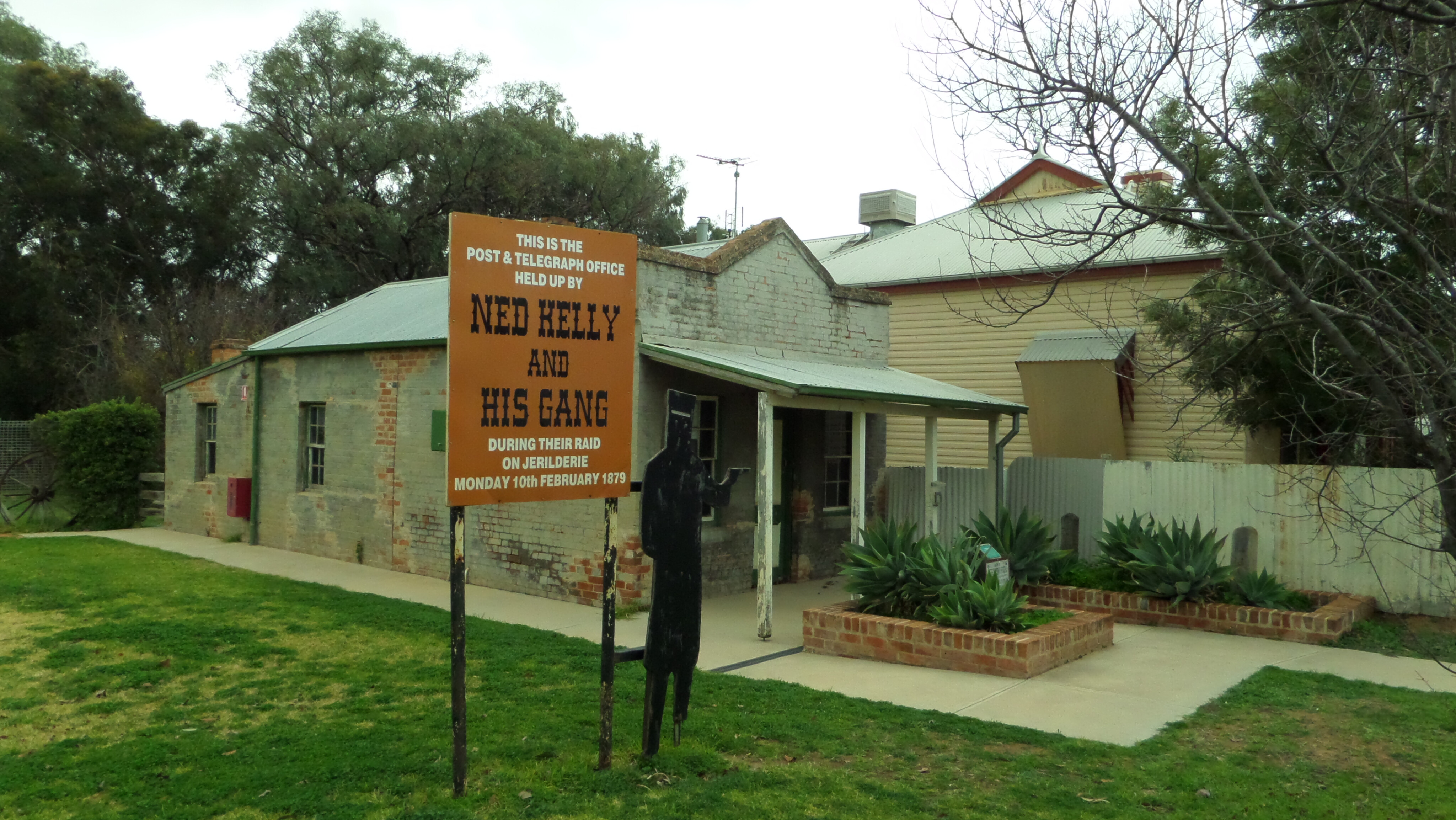
A few decades back, there was a newspaper cartoon depicting a stylised Ned Kelly holding a gun on a bank clerk. Ned’s speech bubble proclaimed, “You will thank me when tourism is invented!”
Well, tourism has well and truly been invented and many towns in north-east Victoria and southern New South Wales certainly benefit from visiting tourists seeking bushranger history.
The sites that now cater for visitors are well worth looking at, but it is still possible to get away from these popular places to get a true feel for the spirit of the life and times of the Kelly gang.
Explore
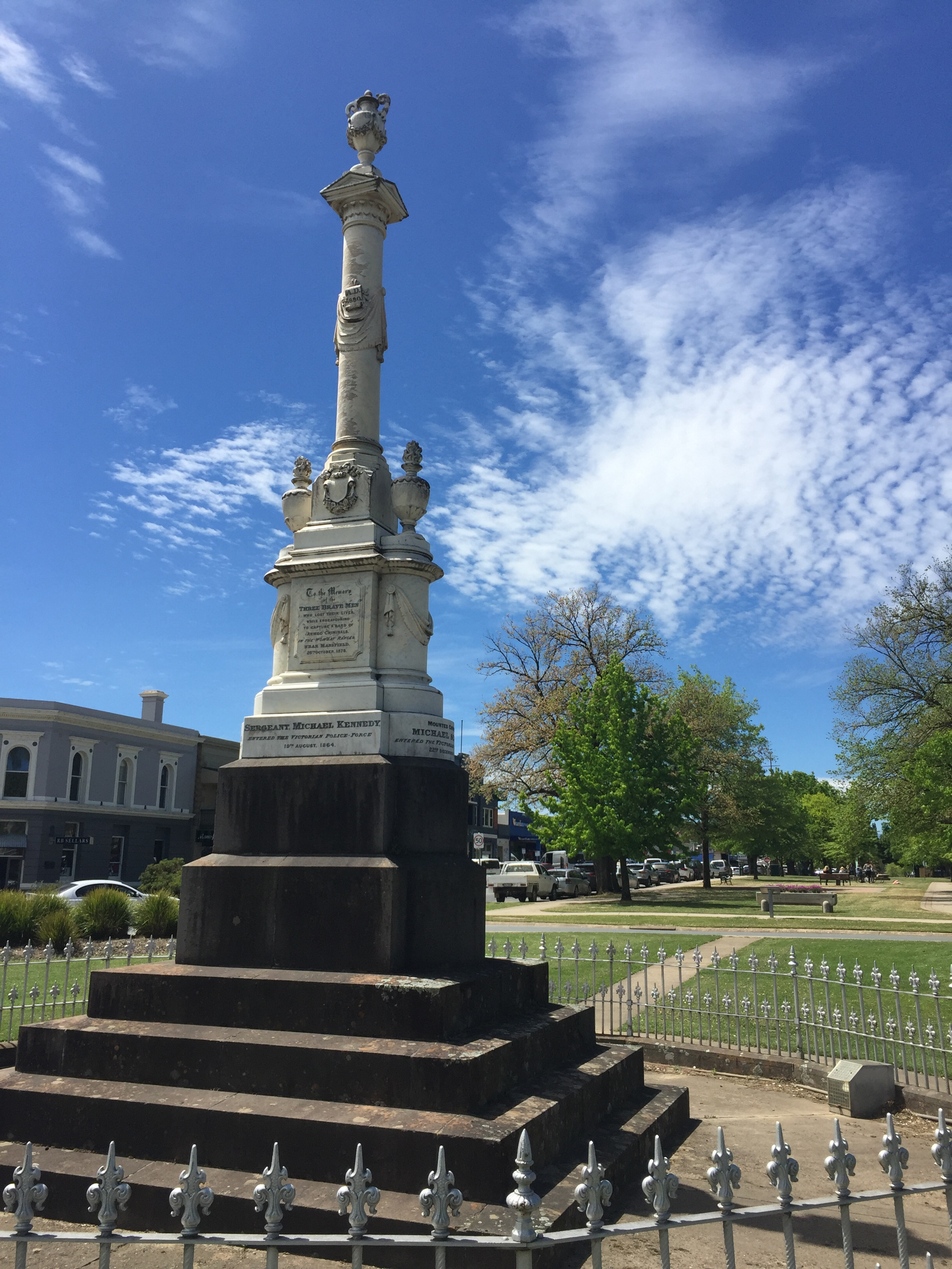
Powers lookout – the old fox and the cub, 1870
Harry Power was transported to Tasmania from Ireland and later turned to crime. He escaped from Pentridge Prison in Melbourne in 1869 and turned to bushranging in the Beechworth area.
A young Ned Kelly served as his assistant. In May 1870, three police officers acting on information captured Harry at his hideout near what is now Powers Lookout.
Roads from Mansfield, Benalla and Myrtleford provide scenic access to Powers Lookout. Parks Victoria has recently made big improvements to the tracks, steps, ladders and lookout platforms which provide visitors with spectacular escarpment views over the Upper King River Valley and the Alpine National Park.
Picnic tables, fireplaces and toilets are available, but camping and dogs are not allowed. It is possible to seek out further trails and campsites in surrounding reserves, or camp at Stringybark Creek and drive across to Powers Lookout for the day.
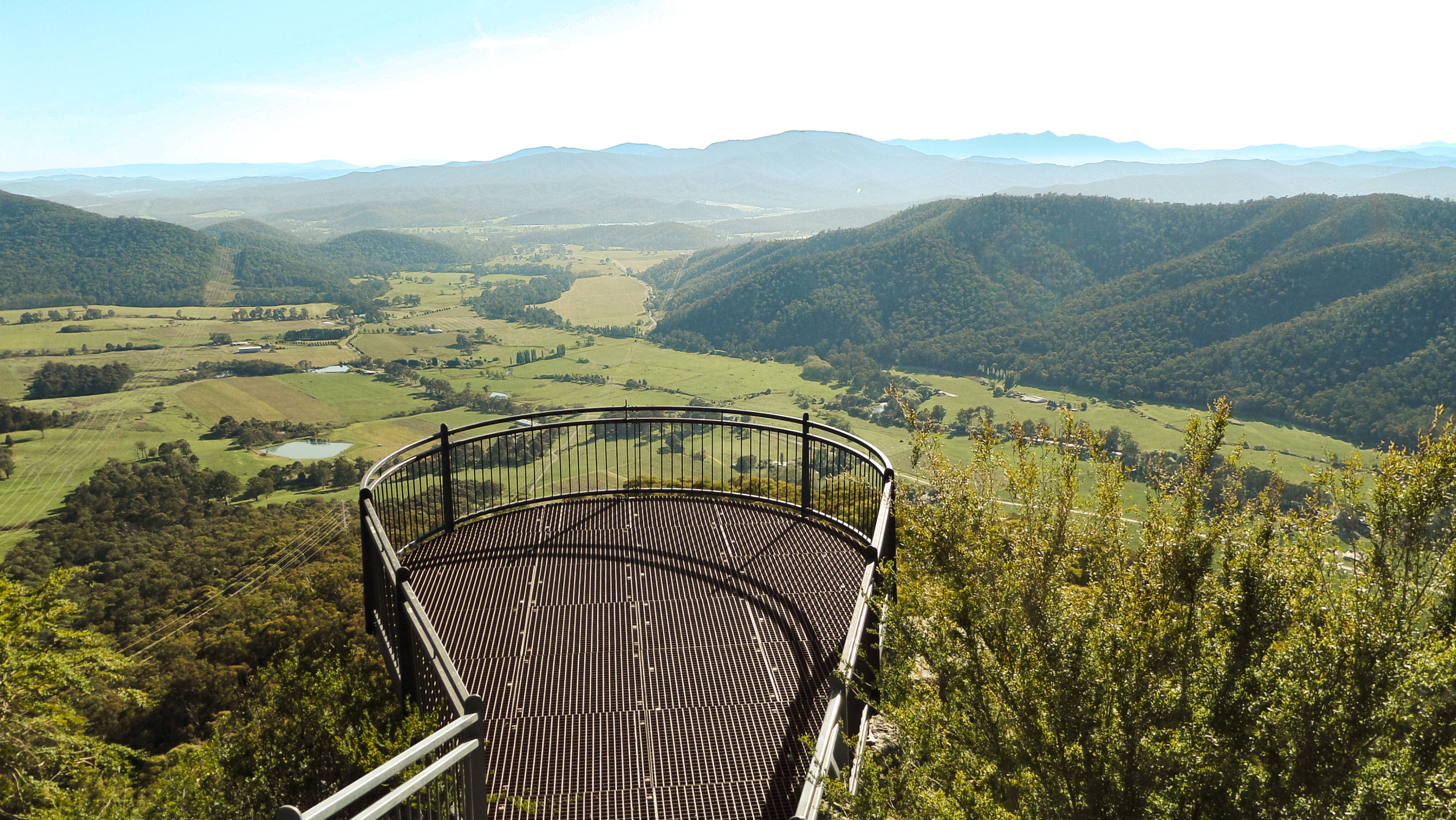
Greta – beginning and ending, 1878-2013
Ned lived with his mother, brothers and sisters at Greta, where he built his family a new slab house, not long before taking to the bush as a murderer and outlaw. It was in this house that on 15 April 1878, Constable Alex Fitzpatrick claims that he was shot in the wrist by Ned Kelly.
The site of this house was once visible from the road, marked by two obvious brick chimneys. These are now gone, and no sign of the house remains. Greta is still worth a visit though, as the final paragraph in the saga can be found here.
Ned was eventually hanged on 11 November 1880 in Old Melbourne Gaol and the body was buried on site. In 1929 Ned’s and other remains were exhumed and reburied in Pentridge Prison. In 2013 Ned’s remains were removed again and reburied in an unmarked site in Greta Cemetery. A headstone by the gate commemorates the event.
Following the incident at the house in Greta, Ned, brother Dan, Joe Byrne and Steve Hart took to the bush and the two-year Kelly Outbreak began.
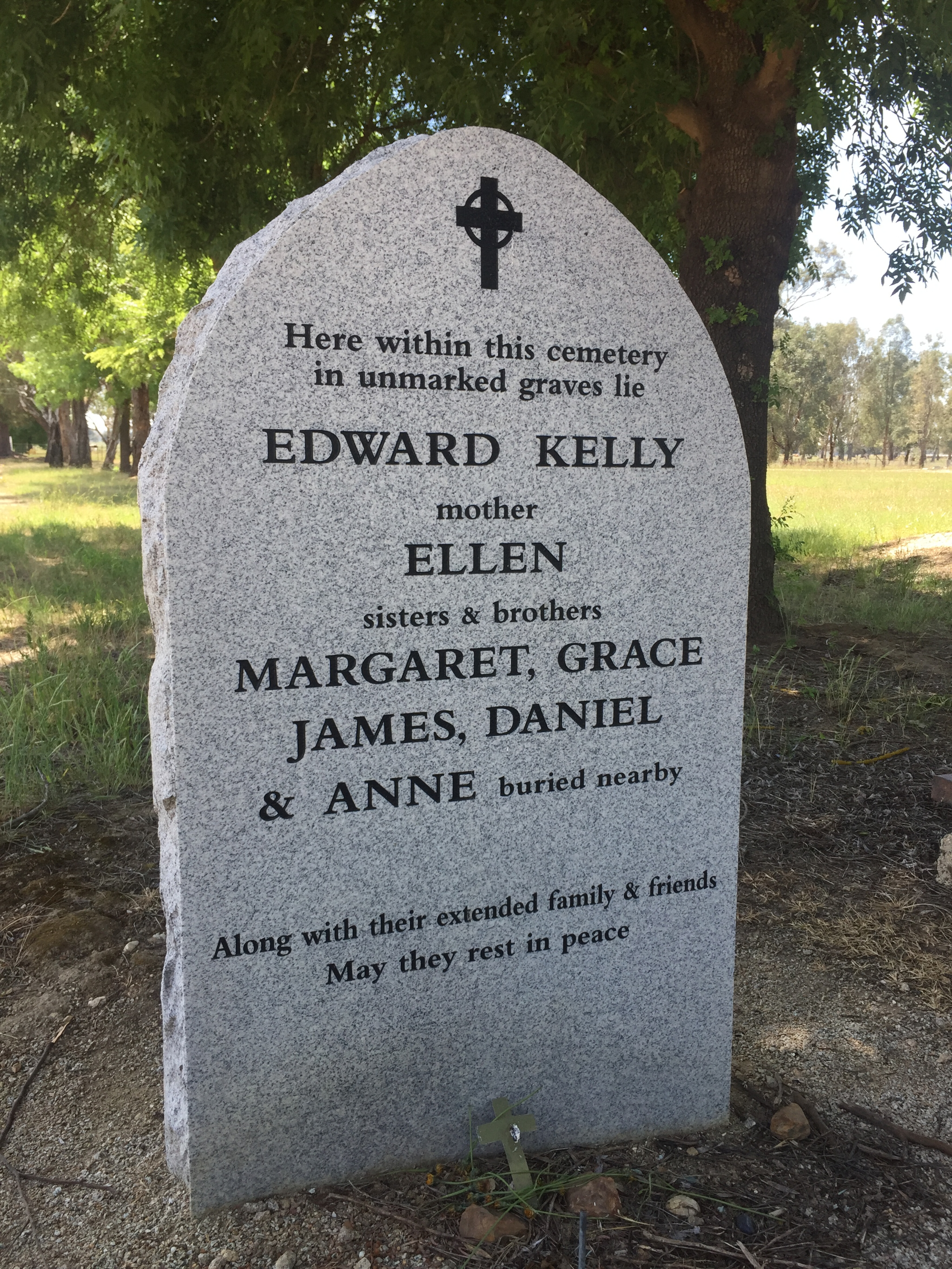
Stringybark Creek – blood on the wattle, 1878
It is now 146 years since three Victorian police officers lost their lives at the hands of Ned Kelly and his gang at Stringybark Creek in the Wombat Ranges.
On 26 October 1878, Sergeant Michael Kennedy, Constable Thomas Lonigan and Constable Michael Scanlan were ambushed and killed in their isolated bush camp. Only Constable Thomas McIntyre survived to tell the tale.
Warrants had been issued for the arrest of Ned and Dan Kelly and two police parties were to converge on the suspected hideout in the Wombat Ranges. The southern party from Mansfield under Sergeant Kennedy was well ahead of the northern patrol. Kennedy’s party made camp at a clearing in the thick bush that had been used by gold miners in the past.
The next day Kennedy and Scanlan rode out to seek any sign of the fugitives, while Lonigan and McIntyre looked after the base camp.
Ned and Dan and two mates, Joe Byrne and Steve Hart, were camped very close by and knew of the police presence and decided to strike first. They attacked the police camp and shot Constable Lonigan while McIntyre was taken prisoner.
When the other two policemen returned from patrol they too were attacked and shot dead. Sergeant Kennedy retreated while firing his pistol, but he was followed and shot by Ned. In the confusion, McIntyre escaped on Kennedy’s horse and eventually made his way back to Mansfield after a miraculous and fearful journey.
Ever since that day, visitors have been attracted to the site of the bush battle. At first a tree was marked and when it was cut down another was marked. It too fell to old age and so a nearby giant forked gum was carved with the inscription ‘1878 KELLY SHOT LONIGAN’.
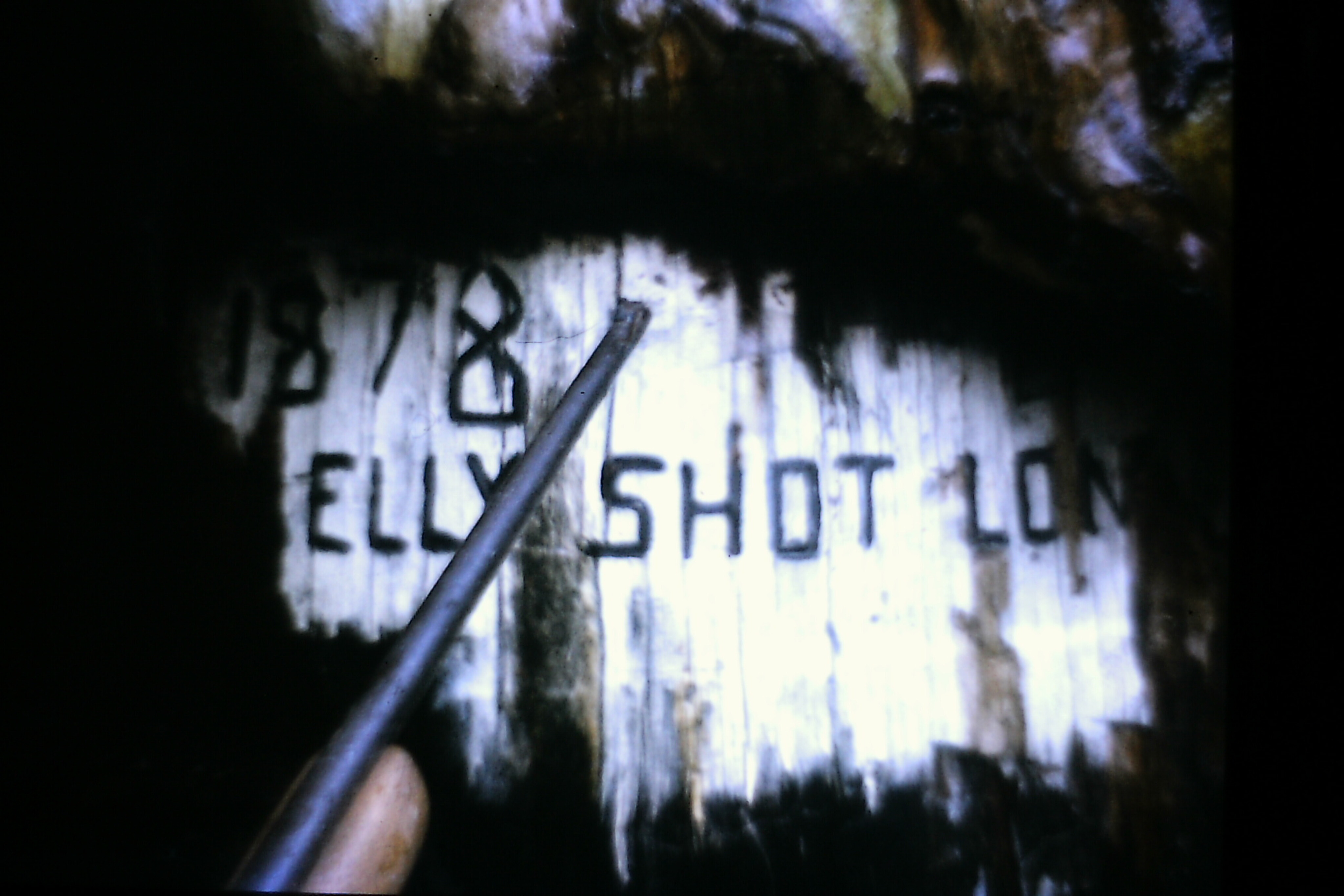
That tree still stands in the vicinity, but the inscription is now gone and replaced with a metal plaque representing Ned’s armour. That too is now almost grown over by the bark of the tree.
As the decades rolled by, the actual site of the camp and the battle was forgotten and now many interested people have different theories as to its precise location. A picnic area was developed last century at the most likely site and today that site is seen as the most probable location.
In 2017 the official Victorian government comment was, “Significant research over many years by individuals and groups has suggested different sites as possible locations where events unfolded. Much of this research continues and remains contested.”
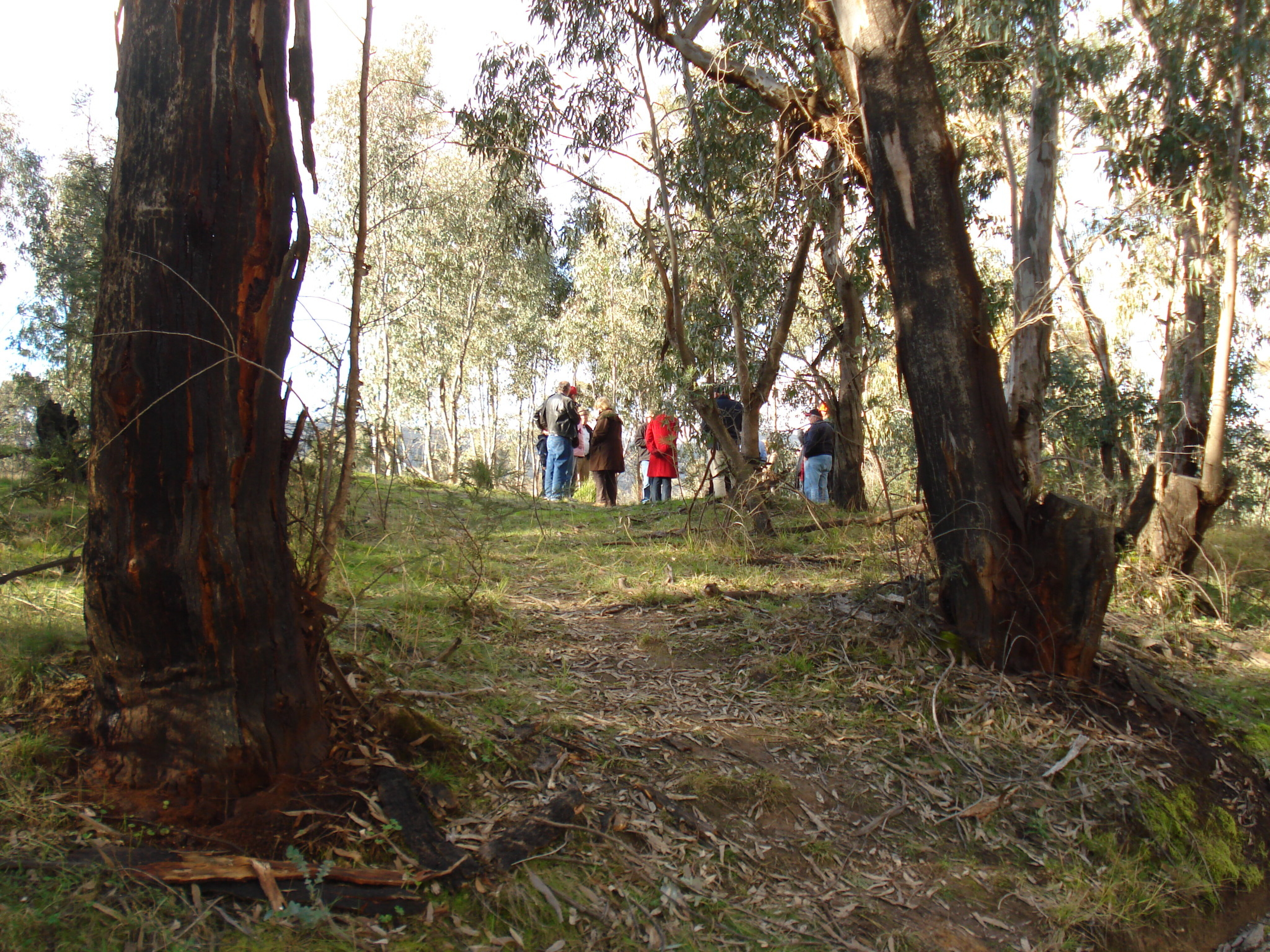
In the lead up to the 140th anniversary, and well ahead of the sesquicentenary in 2028, the Victorian Department of Environment, Land, Water and Planning has been working with the police, families and others to commemorate the lives of the fallen officers.
Work commenced in August 2018 to enhance infrastructure and signage at the site to better reflect the historical importance of the location. Wonderful results have been achieved.
Where previously the site was mainly a picnic area with a memorial plaque, it is now mainly a memorial zone with a couple of picnic tables in one corner.
The location now has the feeling of quiet contemplation and reverence. The carpark and toilet are up on the roadway and as you cross the road and read the large information board, which overlooks the clearing, the spirit of the place starts to overtake.
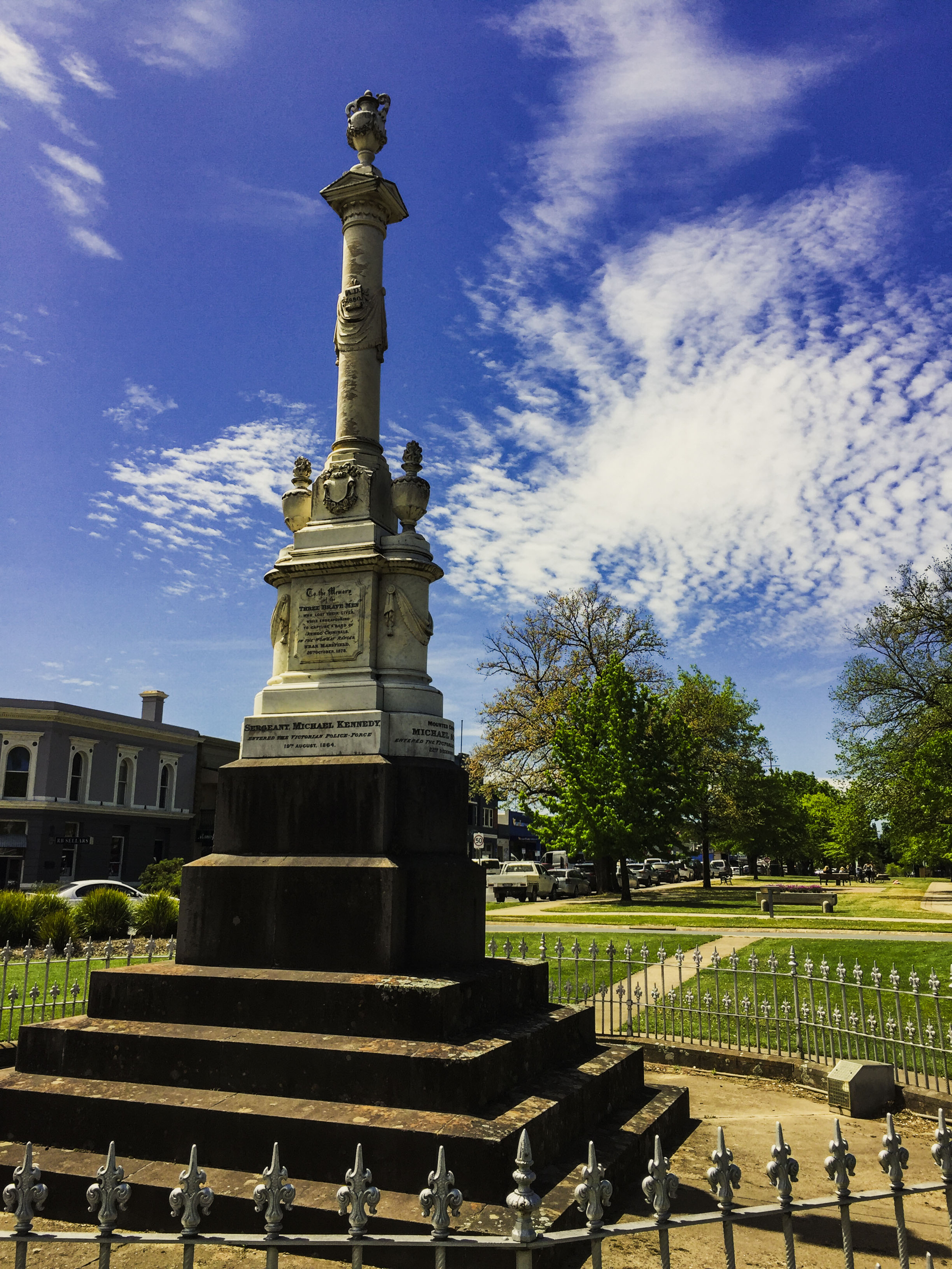
A track descends the gentle slope to the central feature which is the three-sectioned memorial on the perceived police campsite.
Three tall markers describe the three slain officers with stone curved benches to aid contemplation as you read. The spirit of the site can be very strong here at dusk, the time of the ambush.
Adjacent to the memorial is a circular stone wall with six information panels describing the events of those tragic days in chronological order. Here too the stone wall provides contemplation space.
Perhaps the most innovative aspect to the whole site and the most interactive for visitors is the pathway leading northward out of the clearing following the last desperate attempt by Sergeant Kennedy to escape destruction. This is also McIntyre’s escape route, and his information board is located here.
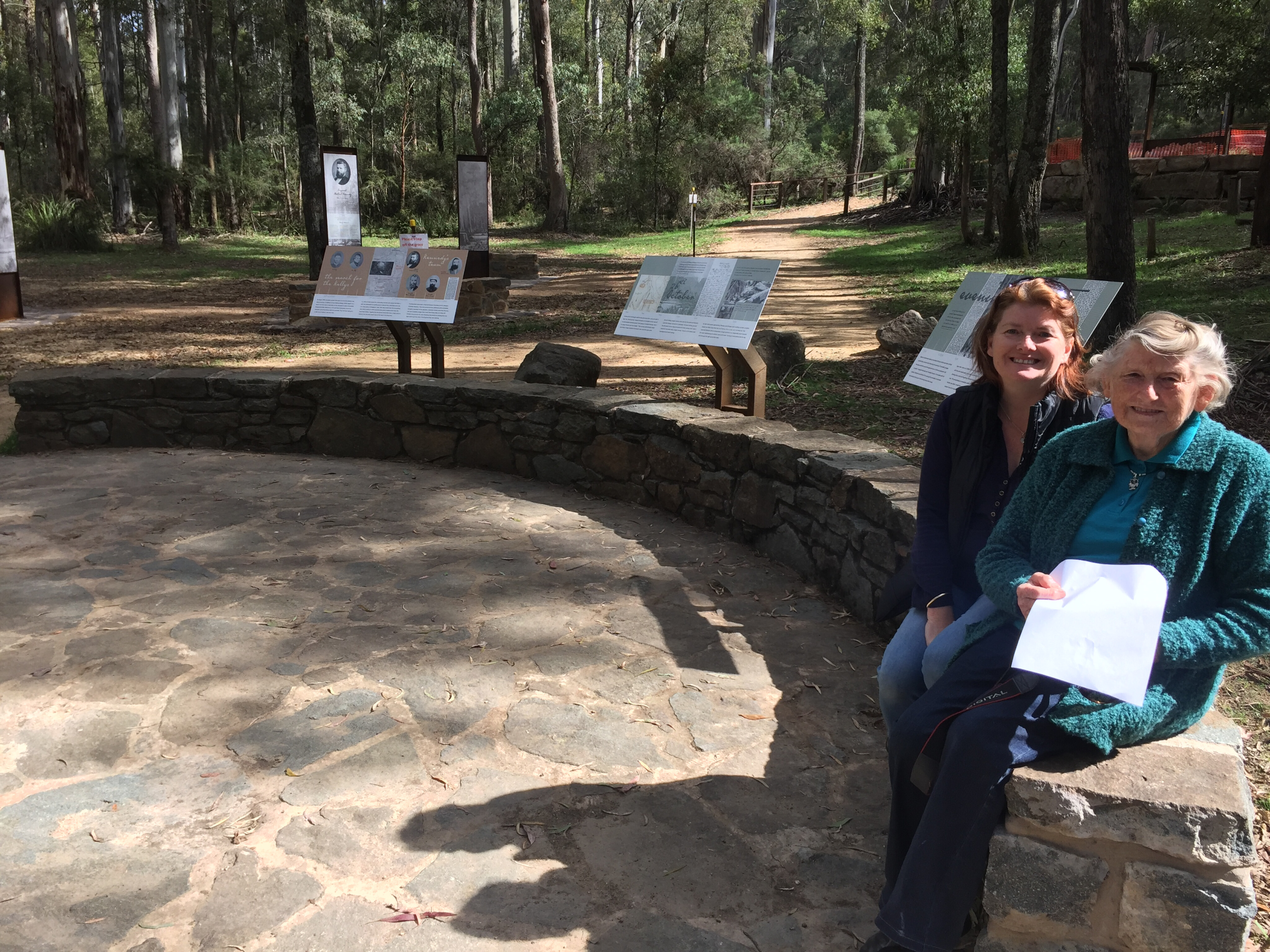
A map post depicts the 1.4km circular walking path that follows as best as can be researched the route of McIntyre and Kennedy. McIntyre on horseback escaped down the creek valley. Kennedy on foot and wounded was fighting for his life.
Adults can use their imagination to try to understand what was going through the mind of the pursued Kennedy and the minds of the pursuers, Ned and Dan Kelly.
This is a real historic interactive experience for visitors. No bells and whistles, just the wild bush, and the imagination can span those 146 years. Children will appreciate the real experience if it is explained well to them.
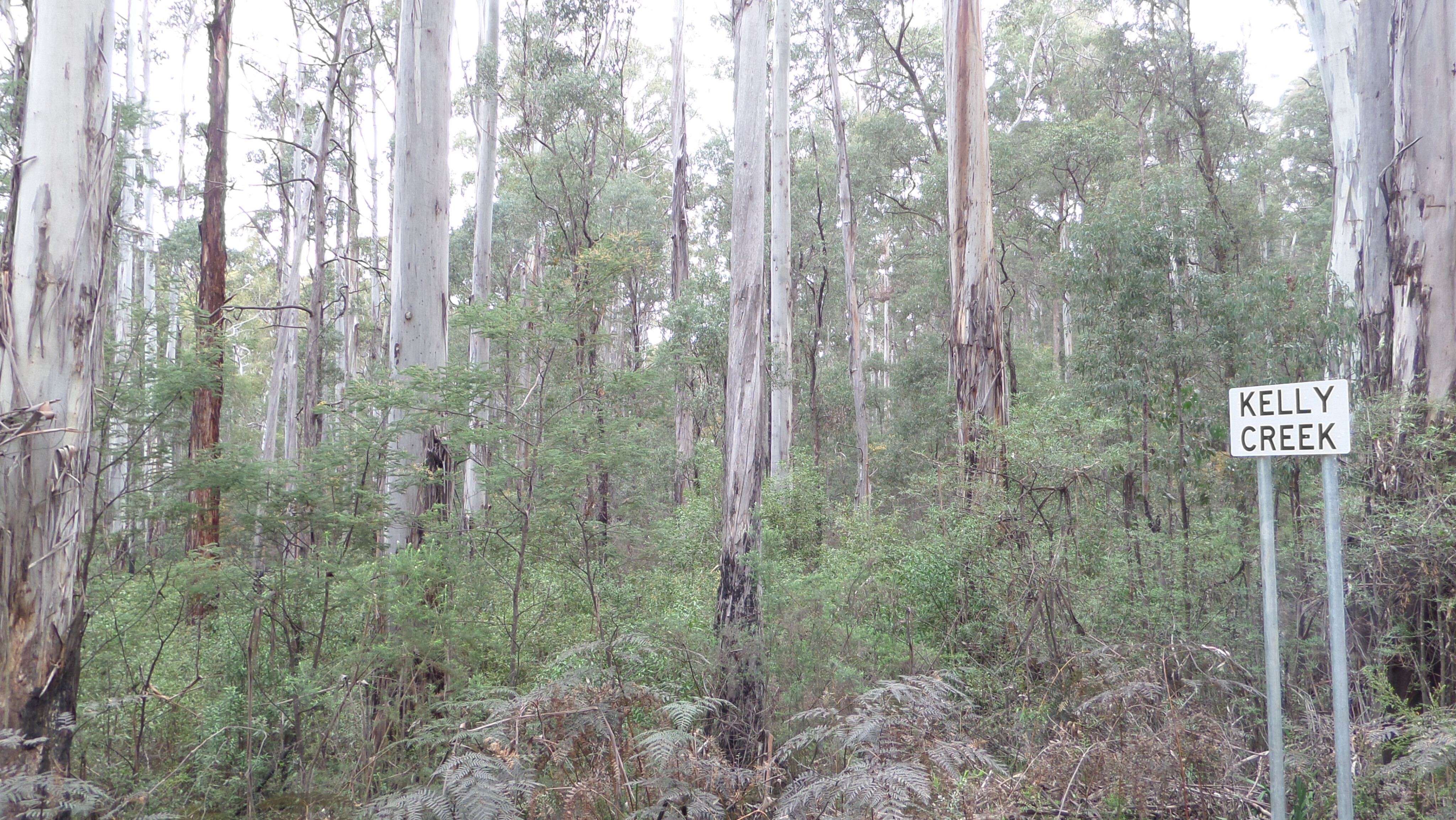
After a few hundred metres, the pathway crosses the road and enters the divide between Stringybark and Germans Creek.
Kennedy reached a point somewhere in this thick bushland before he was overtaken by Ned and shot at close range. An information sign marks a possible site and of course there is a large contemplation rock bench.
The track continues to a sign explaining the fortified Kelly hut and hideout that was located across the Germans Creek divide at Bullock Creek (now Kelly Creek).
The circular walking path now crosses the road and descends some steps to follow Stringybark Creek down to the Kelly Tree. Some researchers think that the police camp was in this area. The tree has an information sign, and it is fun for kids to discover Ned’s helmet peering out from the encroaching bark tomb.
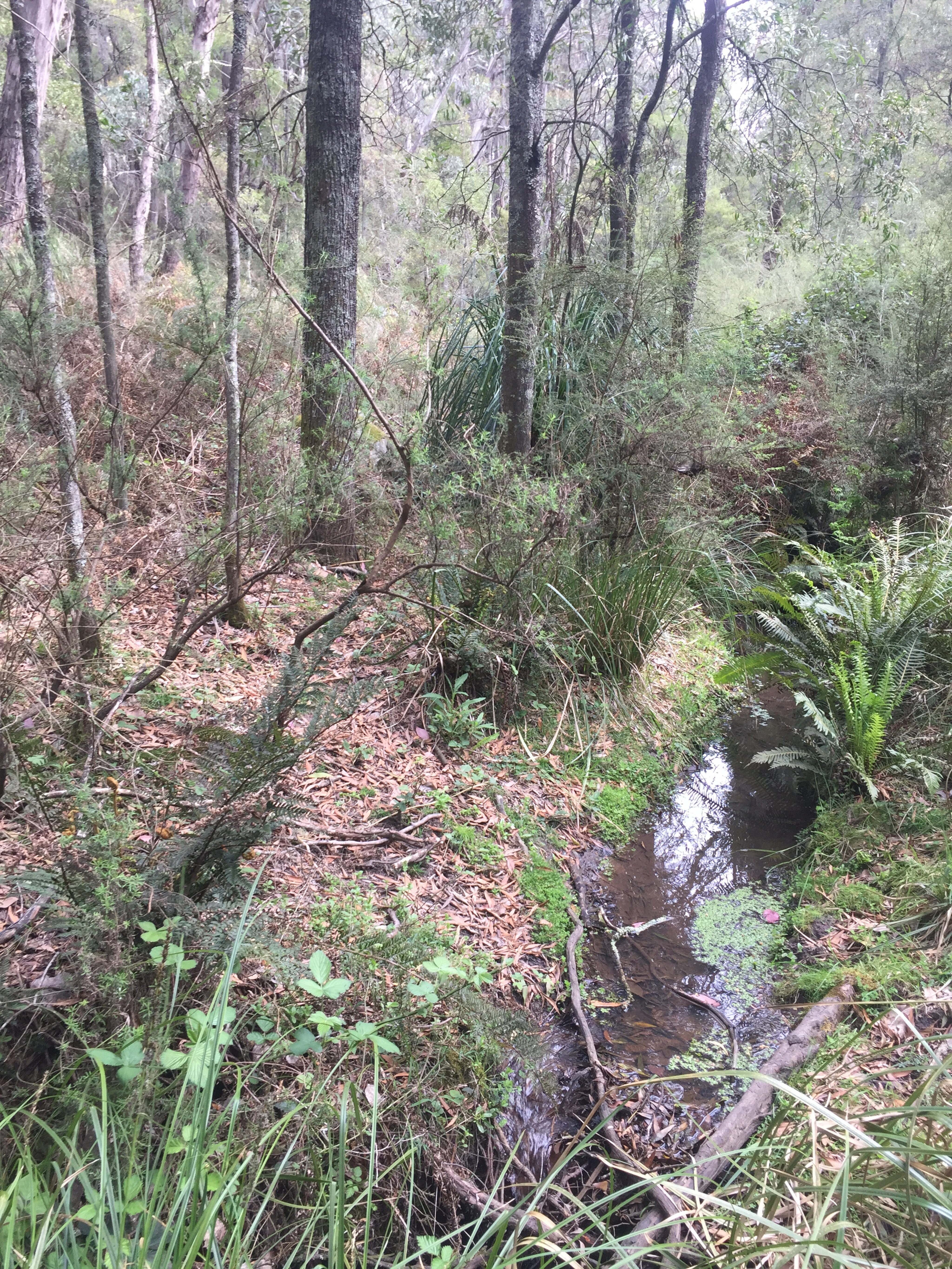
When I first visited the isolated site in 1968, light snow was falling. I located the tree with its ‘1878 KELLY SHOT LONIGAN’ much worn inscription. Over 50 years ago there was just thick moody bush, and the spirit of the place was strong.
The track now returns to the memorial clearing. A track over a small bridge across the creek leads a short distance up to the adjacent camping area which is not visible from the memorial site.
This is one of the best free isolated forest camping areas that you will find. There are plenty of bushy nooks or wide-open grassy spaces to choose from. Toilets and a picnic shelter are provided but no water. Firewood from the surrounding bush is plentiful. The access road is just south-east of the Stringybark Creek Road.
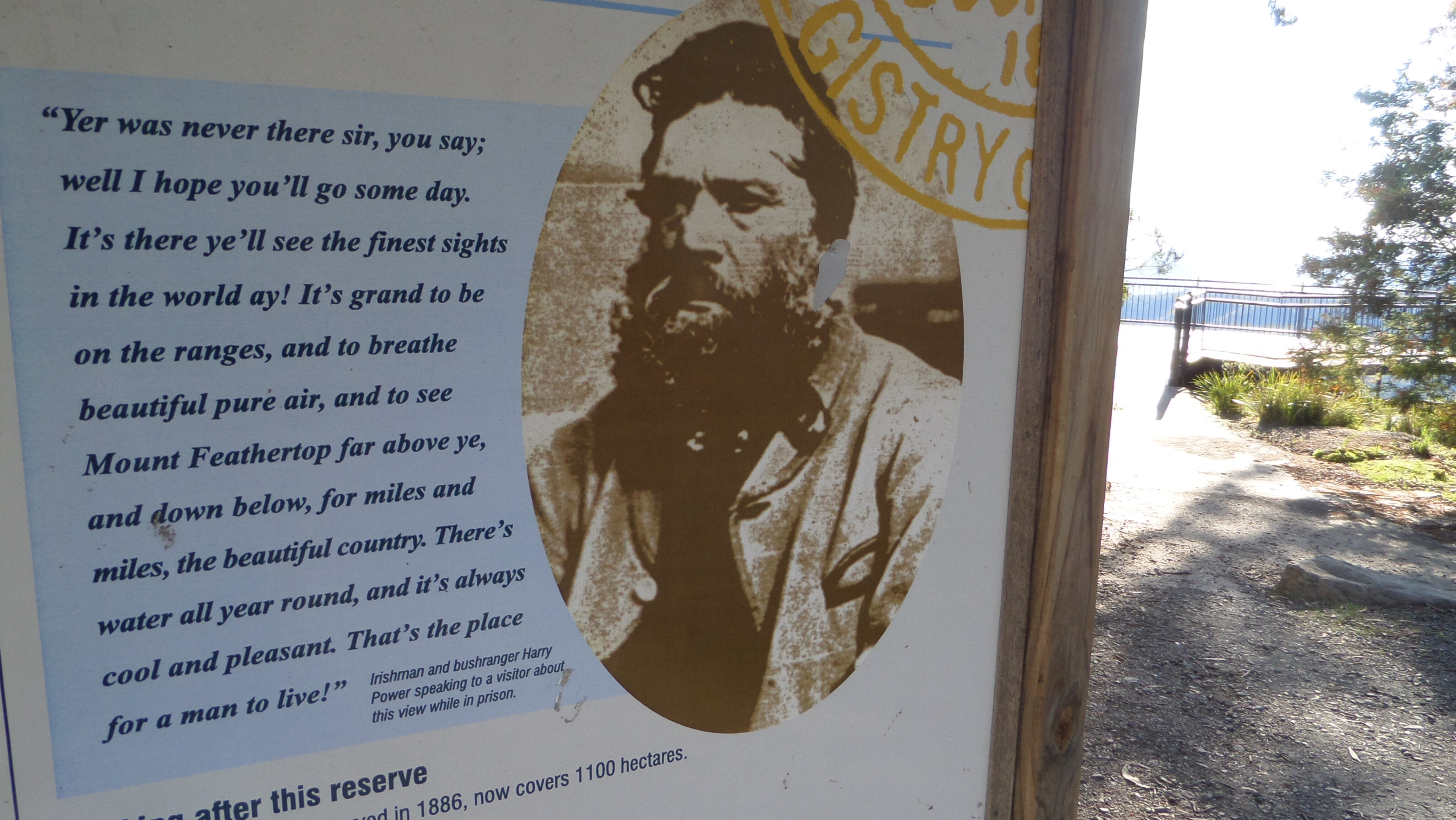
While in the area it is worth visiting other features. Just up Madhouse Road is a pioneer grave. The Toombullup School Site Campground is worth a look. There is a half-hour walk into the site of the Kelly fortified hut on Kelly Creek.
Follow the rough track just north of the Germans Creek crossing almost opposite Madhouse Road.
Take the right branch at the dirt pile. There is nothing left at the scenic bushland site. When the creek is reached the hut was thought to be located to the right where the old sawmill sawdust pile can be seen.

The hut was removed to build the sawmill. There is another large sawdust pile on the far side of the creek. The walking track is very overgrown.
In Mansfield you can visit the graves of the policemen and see their monument in the main street. It was dedicated while the Kelly Gang was still at large.
Stringybark Creek is well signposted. From Benalla, travel into the Toombullup State Forest via Tatong. From Mansfield travel via Tolmie. Both access routes have steep sections with narrow gravel roads. Timber trucks work in the area. If towing, the Tolmie access may be best with 11km of dirt road to the site.

Euroa and Jerilderie – banks in peril, 1878 and 1879
Being an outlaw on the run can be an expensive business. Supplies and ammunition were needed. Families needed to be supported and friends needed to be paid so that they would not be seduced by the high government rewards.
Robbing a bank or two would solve the financial problems and these raids were carried out with utmost skill and planning. A base of operations was established, hostages taken, surveillance undertaken, and worthwhile proceeds stolen.
No one was physically injured, and the gang got away clean. In both cases, similar amounts were stolen – over 2000 pounds. This amount has been compared to an average worker’s lifetime earnings over 50 years.

The museum in Euroa tells the story of the raid. The National Bank building was pulled down in 1974 to make way for a small office building with plaque attached, on the corner of Railway and Binney Streets.
Jerilderie, NSW, like Euroa, is also now minus the bank building, though some sites and buildings remain. These include the Post and Telegraph Office which was disabled by the gang.
Other sites are the police station and stables, the courthouse, the Royal Mail Hotel and the Bank of New South Wales site.

Beechworth/Woolshed Valley – murder in the night, 1880
In line with Ned’s policy of always being in control of his crimes, he plans to derail a police train and shoot the defenceless survivors, while he and his gang are protected in armour.
To entice the police train to a derailment site of his choosing, he plans the murder of Aaron Sherritt, who was once a friend but who has now turned police informer.
Sherritt is murdered at his hut in the Woolshed Valley below Beechworth and the trap is set. The Woolshed Road can be accessed from Beechworth via the Wodonga then Chiltern Roads. Many sites along this old goldfields route have been marked with information signs.

At the Devils Elbow is the marker for the Woolshed School site.
A little way on after cresting a small rise and cutting is the site of the Sherritt hut on the right, between the road and the fence. Look for ground depressions. The site is usually not marked, as signs disappear. A day can be spent exploring the history along rough roads through to El Dorado.
Beechworth retains numerous Kelly buildings and sites, and caters well to visitors. Historic buildings and sites include the gaol, now open for tours, courthouse, museums and historic walks and drives.

Glenrowan – walking the battlefield, 1880
Glenrowan has always been the epicentre for experiencing the Kelly story. Kelly tourism sits side by side with the actual battlefield walking route.
Now this has all come together with the new Glenrowan Viewing Tower, a circular elevated platform, located in the Lions Park in the centre of town. The tower gives an overview of the battlefield, as well as information on the events of June 1880.
Glenrowan is where the Kelly story reaches a climax. The police train was saved from derailment, the outlaws in their bush-made armour fought the police, three outlaws died along with civilians caught in the crossfire, and the besieged hotel was burnt down.

Ned survived to be hanged in Melbourne Gaol on 11 November 1880.
For the complete story, a visit to the big smoke is required, where you can visit the gaol and view the armour. Ned’s suit is in the State Library, Joe Byrne’s is in a private collection, while Dan Kelly’s is in the Police Museum and Steve Hart’s armour can be seen in Old Melbourne Gaol.
Amazingly, it took until 2002 to reassemble the pieces, the first time since 1880, into the probable original configuration. On rare occasions the four sets are displayed together. I have been lucky to experience this event twice.
Want to know more?
Brochures covering Kelly Country touring are available throughout the region.
Gregory Powell is the author of Bushranger Tracks and Bushranger Tracks – Beyond the Legends.









COMMENTS